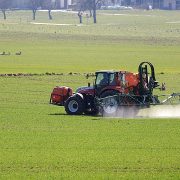What does this tool to do?
This new occupational job-exposure matrix (OAsJEM) was developed, as previously suggested (Kennedy et al, OEM 200), in order to allow researchers to use job title information obtained in respiratory disease questionnaires, to assign exposure risk groups, to survey participants, based on their job that places them at high risk for the development of occupational asthma.
What is included in the matrix?
The ‘job’ axis of the matrix contains 506 job codes from the ILO International Standard Classification of Occupations: ISCO-88, published 1990. All submajor, minor, and unit group job titles are included; major group codes are excluded. These should be recoded to appropriate submajor or more precise codes prior to use of the matrix. The ISCO-88 codes and detailed descriptions (book or computer data file) can be obtained from: http://www.ilo.org/public/english/bureau/stat/isco/index.htm
The ‘exposure’ axis of the matrix contains:
- 2 columns indicating ISCO88 job codes and their standard description
- High Molecular Weight (HMW) sensitizers : 10 columns for HMW known risk factors for occupational asthma
- Low Molecular Weight (LMW) sensitizers or irritants : 20 columns
- 2 columns indicating jobs that could benefit from a re-evaluation step to check job codes and exposure evaluation (verification variables, see below)
- 2 columns of detailed comments describing how to carry out the checking of ISCO codes and re-evaluation (comments)
A tablular version of the exposure axis of the matrix and associated 7 large groups can be seen here.
How were the exposure categories chosen?
This OAsJEM was updated using a standardised procedure. We addressed important methodological points during the process: (a) all experts evaluated exposure independently from each other. In case of disagreement, the final decision was taken by consensus within the experts’ team. (b) specificity was favoured over sensitivity for high level of exposure only (not for ‘medium’ exposure). A working group of three experts was assigned to each agent: each expert evaluated exposure to a number of specific agents varying from 3 to 19 agents, according to their agent of choice and expertise.
First the list of agents was updated from the previous one (22 agents, categorised from a list of 150 substances from Chan-Yeung and Malo (Table of the major inducers of occupational asthma. In: Bernstein IL, Chan-Yeung M, Malo JL, et al, eds. Asthma in the workplace. New York: Marcel Dekker, 1993:595-623.) based on the recent literature. The list was further improved during the process resulting in a final version consisting of 7 large groups with 30 specific agents in total. The new agents were identified based on recent literature knowledge, using mostly information from major literature reviews for sensitiser and irritant -induced asthma, respectively.
What criteria were used to classify a job as exposed for each category?
Each cell in the matrix contains a classification of exposures refined from yes/no to semi-quantitative metrics i.e, high: high probability of exposure and moderate to high intensity; medium: low to moderate probability or low intensity of exposure, such as ‘high probability and low intensity’ or ‘low probability and moderate to high intensity’; no: unlikely to be exposed (low probability and low intensity). Experts classified a job as ‘high probability of exposure’ when they considered that at least 50% of the workers were exposed. For high level of exposure to asthmagens, because previous research has shown that job-exposure matrices are optimized when specificity is favoured over sensitivity, a job was classified as exposed (ie.coded ‘2’) only it that job was assessed as having a strong likelihood of exposure relevant to occupational asthma. A strong likelihood means that the probability of exposure was expected to be high for a significant number of subjects having that job.
The expert re-evaluation recommendations were also improved with a checking for (i) ISCO code for selected jobs (mostly the larger 2- and 3-digit ISCO-88 codes) and (ii) exposure assessment for selected jobs (poorly defined and/or heterogeneous jobs). For the expert re-evaluation recommendations, period and country-specific work situations were taken into account, in addition to job, industry and tasks recorded by each participant. The Expert re-evaluation is an important step and a strength of the method, as previously underlined (Kennedy et al, OEM 200).











